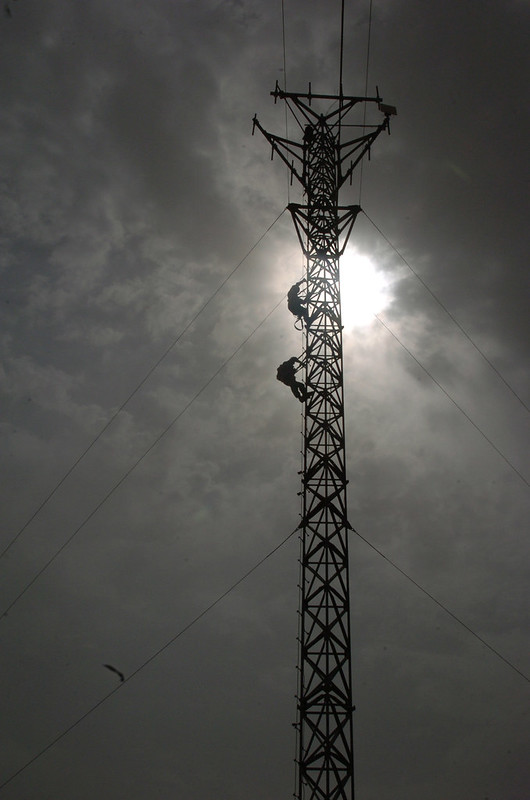

Objective
The purpose of this topic is to demonstrate the ability to interface to a modern Software Defined Radio (SDR) and the Photon digital signal processing framework in order to characterize large swaths of the RF spectrum in near-real-time (NRT) using AI/ML techniques for signal modulation recognition and sorting (Blue Force emitters; Red Force emitters; Civilian emitters); Demonstrate the ability to “learn” new or unique threat signals of interest so they can be rapidly identified when they transmit.
Description
The Electromagnetic Spectrum (EMS) is growing increasingly crowded on the battlefield with US and Coalition blue-force emissions, enemy red-force emissions, and emissions from civilian telecommunications infrastructure all present in the same electronic battlespace. US ground force tactical Signals Intelligence (SIGINT) and EW sensors require the ability to rapidly scan large swaths of the RF spectrum and automatically characterize emissions by frequency and modulation type using Machine Learning. Currently, modulation and signal recognition largely use libraries and look-up tables today. Process is very linear and is difficult to do in near-real-time with large amounts of data. The RCCTO sponsored a Mod Rec Challenge in FY19 with mixed results. If successful, Provide the ability to rapidly characterize the modulation type of signals transmitting within radio line of sight of tactical SIGINT/EW sensors on the battlefield. Provide the ability to learn a previously unknown threat signal of interest at the tactical edge so it can be identified and located when it transmits in the future.
Phase I
Phase I consists of completing Requirements Definition, developing digital Interfaces to SDR and Photon, and demonstrating initial Modulation Recognition AI/ML capabilities for selected signals.
Phase II
Phase II consists of demonstrating advanced Modulation Recognition capabilities for multiple signals, demonstrating ability to “Learn” unique signal. Must “productize” SW – Static and dynamic SW regression testing feature qualification testing, cybersecurity/IA scans, updates to system UI to implement SW, docs, etc.
Phase III
Phase III commercialization will provide a mature software for transition to Program of Record.
For more information, and to submit your full proposal package, visit the DSIP Portal.

References:
Objective
The purpose of this topic is to demonstrate the ability to interface to a modern Software Defined Radio (SDR) and the Photon digital signal processing framework in order to characterize large swaths of the RF spectrum in near-real-time (NRT) using AI/ML techniques for signal modulation recognition and sorting (Blue Force emitters; Red Force emitters; Civilian emitters); Demonstrate the ability to “learn” new or unique threat signals of interest so they can be rapidly identified when they transmit.
Description
The Electromagnetic Spectrum (EMS) is growing increasingly crowded on the battlefield with US and Coalition blue-force emissions, enemy red-force emissions, and emissions from civilian telecommunications infrastructure all present in the same electronic battlespace. US ground force tactical Signals Intelligence (SIGINT) and EW sensors require the ability to rapidly scan large swaths of the RF spectrum and automatically characterize emissions by frequency and modulation type using Machine Learning. Currently, modulation and signal recognition largely use libraries and look-up tables today. Process is very linear and is difficult to do in near-real-time with large amounts of data. The RCCTO sponsored a Mod Rec Challenge in FY19 with mixed results. If successful, Provide the ability to rapidly characterize the modulation type of signals transmitting within radio line of sight of tactical SIGINT/EW sensors on the battlefield. Provide the ability to learn a previously unknown threat signal of interest at the tactical edge so it can be identified and located when it transmits in the future.
Phase I
Phase I consists of completing Requirements Definition, developing digital Interfaces to SDR and Photon, and demonstrating initial Modulation Recognition AI/ML capabilities for selected signals.
Phase II
Phase II consists of demonstrating advanced Modulation Recognition capabilities for multiple signals, demonstrating ability to “Learn” unique signal. Must “productize” SW – Static and dynamic SW regression testing feature qualification testing, cybersecurity/IA scans, updates to system UI to implement SW, docs, etc.
Phase III
Phase III commercialization will provide a mature software for transition to Program of Record.
For more information, and to submit your full proposal package, visit the DSIP Portal.
References:
